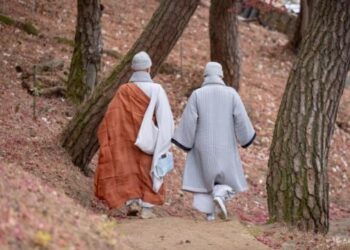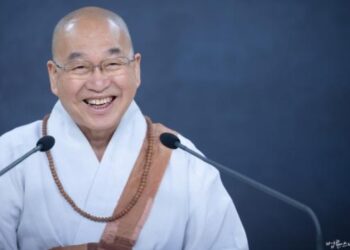Jul 14, 2025 – Welcome Ceremony for Sri Lankan Religious Leaders and Opening Ceremony of the International Reconciliation Conference
Hello. Starting today, for the next five days, Sunim has invited a group of Sri Lankan religious leaders to Korea for interfaith dialogue with the Peace Foundation’s religious leaders group. This gathering, organized by the Peace Foundation, aims to explore the roles and contributions of religious leaders in building peace in Asia by comparing and analyzing the division of the Korean Peninsula with Sri Lanka’s experiences of religious and ethnic conflicts.
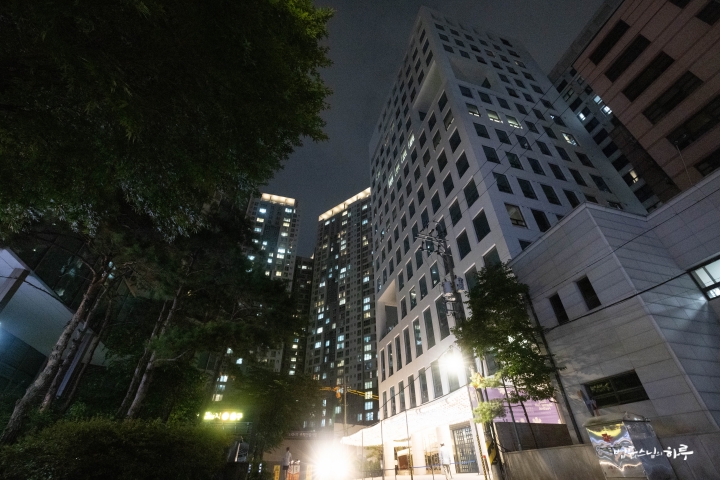
After completing morning practice and meditation, Sunim headed to the Jungto Social and Cultural Center to welcome the Sri Lankan religious leaders group. Senior members of the Peace Foundation’s religious leaders group also arrived one by one.
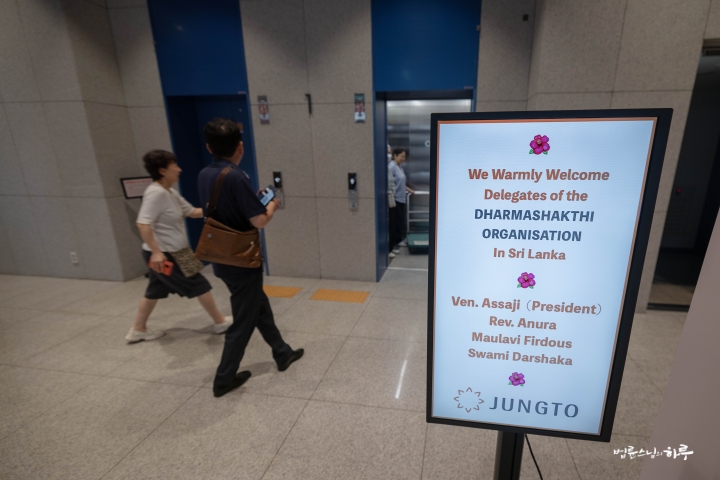
The Sri Lankan religious leaders group had traveled all day by plane yesterday, arriving late at night in Korea and spending the night at the Jungto Social and Cultural Center.
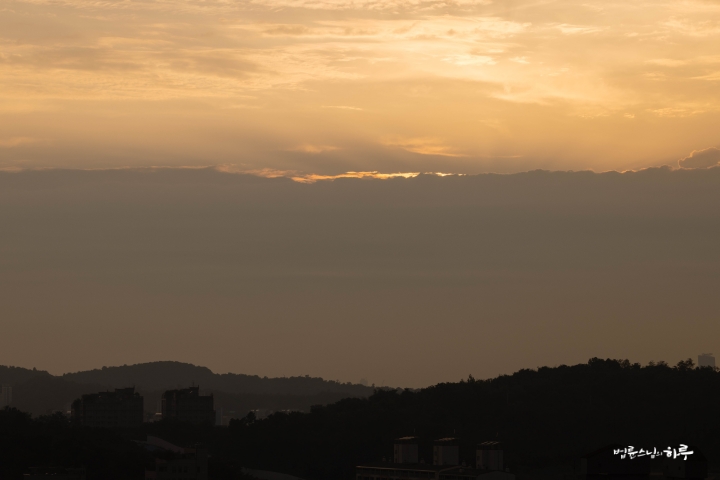
At 10 AM, everyone gathered in the Peace Foundation conference room. Christians, Catholics, Anglicans, Buddhists, Won Buddhists, Hindus, Muslims, and Chondogyo followers—people of different faiths came together in one place to begin a dialogue that transcends religion.
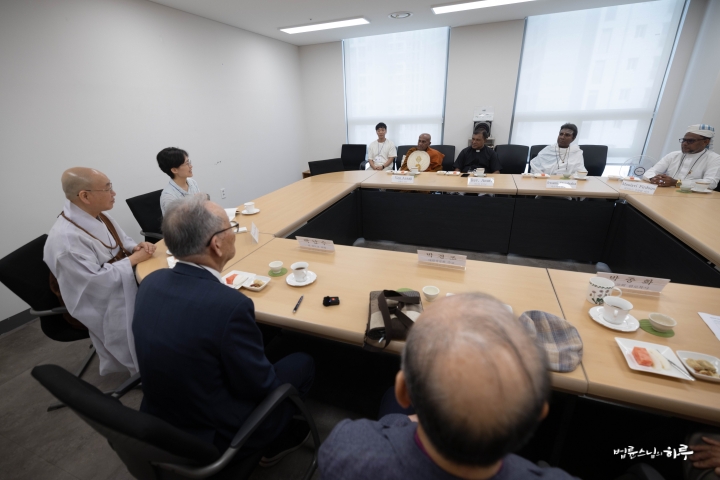
After exchanging warm greetings, Park Nam-soo, former Chondogyo leader and chair of the Peace Foundation’s religious leaders group, delivered a welcome address.
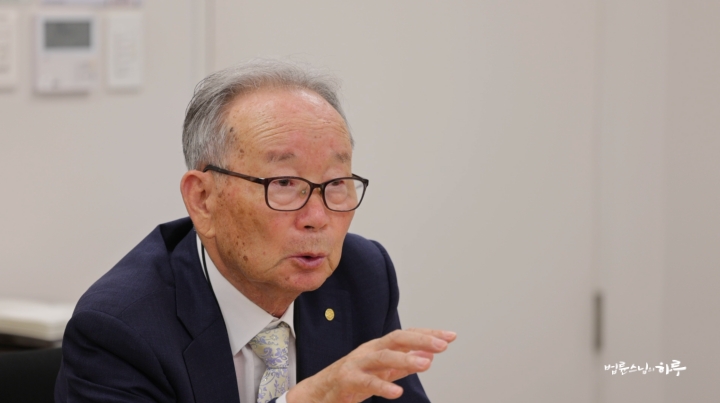
“We welcome the representatives of the Sri Lankan religious leaders group to the Republic of Korea. I thought only Korea had multiple religions. But seeing the multi-religious leaders from Sri Lanka today makes my heart warm. I hope this schedule proceeds smoothly and plays a significant role in creating peace in the future.”
Next, Venerable Assaji, who serves as president of ‘Dharmashakthi,’ the Sri Lankan religious leaders group, introduced himself. Venerable Assaji has played a leading role in resolving conflict situations in Sri Lanka along with other Dharmashakthi members.

“Sri Lanka has four major religions: Buddhism, Hinduism, Christianity, and Islam. We represent an organization called ‘Dharmashakthi,’ and I serve as its president. Sri Lankan Buddhism has three main orders. The Siam order came from Thailand, while the Amarapura and Ramanna orders came from Myanmar. The Amarapura order, to which I belong, began in 1802, and I am currently the 16th leader. Venerable Pomnyun and I have been good friends for about 15 years. I’m pleased to meet all of you.”
Former Anglican Bishop Park Kyung-jo, as a fellow Christian, first asked Reverend Anura a question.
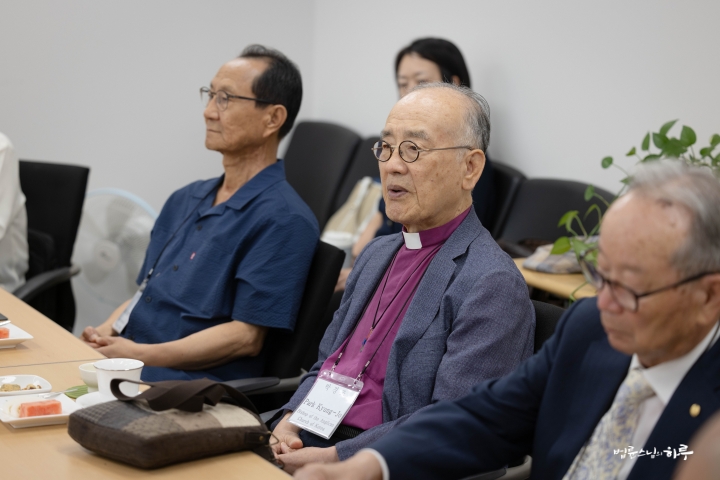
“I’d like to ask Reverend Anura. Where did Christianity first enter Sri Lanka?”
Reverend Anura answered.
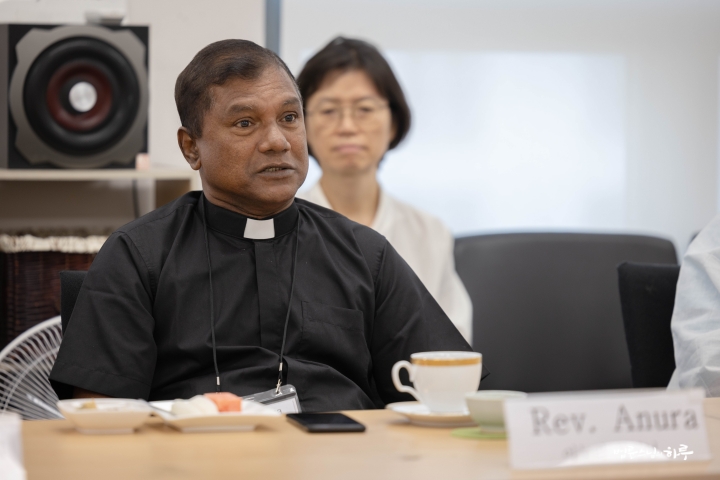
“Christianity in Sri Lanka first entered through Portugal in 1505, and then was also transmitted through the Netherlands and Britain. Since then, various Christian denominations have emerged in Sri Lanka. However, evidence is being discovered showing that Christianity existed long before the Portuguese came to Sri Lanka. For example, things like crosses. Hinduism and Islam also have very long histories in Sri Lanka, with Islam being spread by merchants long ago. Still, Sri Lanka currently has the largest Buddhist population at nearly 70 percent, with Hinduism at 14 percent, Islam at 8 percent, and Christianity at 8 percent. Christianity includes Catholicism and various Protestant denominations.”
Former Bishop Park Kyung-jo then shared his thoughts on today’s gathering and his expectations for the program.
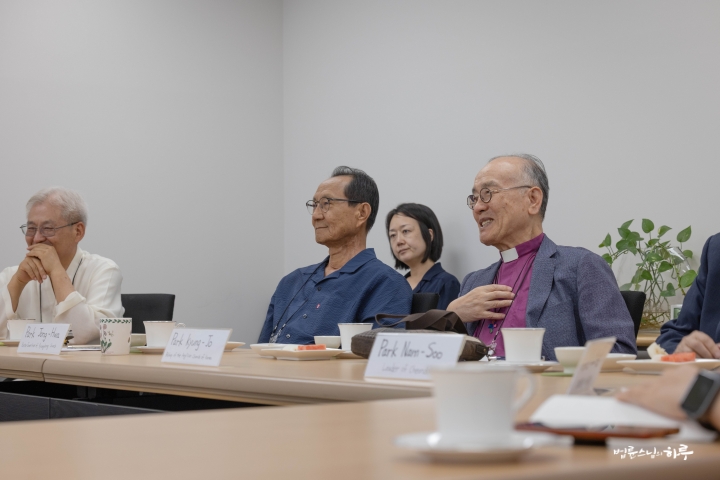
“Today, for the first time in my life, I met Hindu and Islamic clergy. Korea has a large Buddhist population, so I’ve met many monks, and I’ve also met many Christian pastors. But today I feel very honored to meet Hindu and Islamic clergy. I read Reverend Anura’s presentation in advance. I was particularly impressed by Dharmashakthi’s activities and thought you were playing a very admirable role. Reading about the long war that took many lives over 30 years and government corruption, I could understand well the work you’ve been doing, and I felt grateful. Since Korea has similar experiences, I think we can learn much from each other during this opportunity. Beyond religion and skin color, I’m very grateful that we’ve met as human beings, and I welcome you all again from the bottom of my heart.”
Next, Priest Darshaka, representing Sri Lankan Hinduism, gave a greeting. Priest Darshaka has given many lectures at government and non-government organizations, media, and social media platforms to ensure religious harmony among Sri Lankan citizens, and is the youngest among the participants.
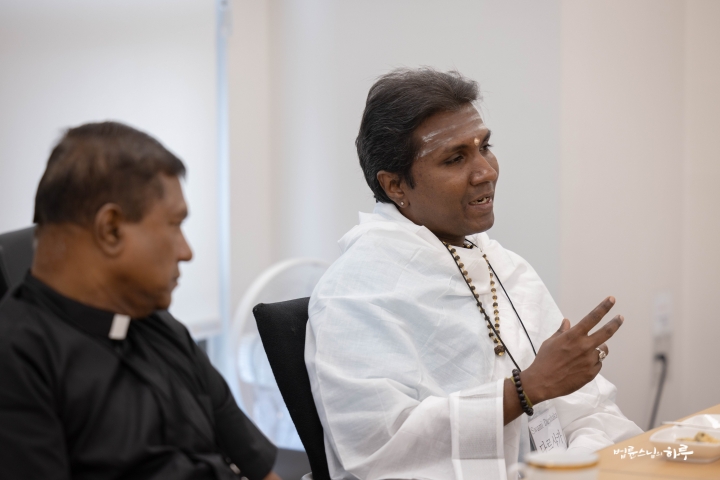
“May Lord Shiva’s blessings be with you. I’m very grateful that Korea also has a community for interfaith dialogue. In Hinduism, we have a saying: ‘We are Lord Shiva’s family. And the whole world is one family.’ Though we work in different regions and have different beliefs, I think we are all connected as one. As Reverend Anura mentioned earlier, Hinduism was a religion in Sri Lanka before Buddhism arrived. Sri Lankan Hindus sincerely welcome other religions. We also consider Gautama Buddha as one of the gods worshipped in Hinduism. Thus, Hinduism and Buddhism are deeply connected in various aspects including culture, religion, and politics. From ancient times to now, various religions including Hinduism and Buddhism have played important roles in developing Sri Lankan society.
We Are All Lord Shiva’s Family
Sri Lanka experienced a long civil war for 30 years, but currently many people are recovering and overcoming this spiritually. The nation is also very interested in peace and reconciliation. I believe these changes are thanks to the hard work of various religious leaders in Sri Lanka who have created the current situation.
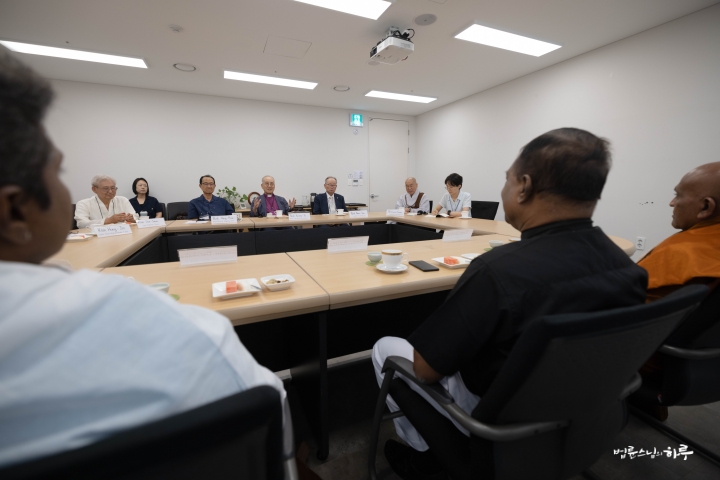
I am personally always grateful to Venerable Assaji. Venerable Assaji has been my role model since I was young. He has dedicated himself to human rights, religious freedom, and peace, and has been a good example for younger generations like us. Not only Venerable Assaji but various religious leaders have worked for love and harmony in Sri Lankan society.
I am participating in this gathering representing Hinduism and representing the Tamil community. Our community also has significant historical connections with Korea, and I understand we have influenced each other for a long time. In Hinduism, we believe Lord Shiva is the embodiment of love. I pray that we can be together with the blessing of Lord Shiva’s love.”
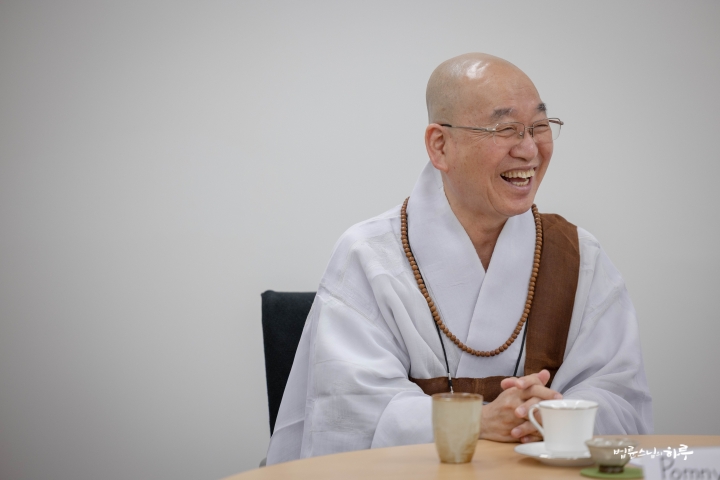
Next, Mr. Firdous, representing Sri Lankan Muslims, gave a greeting. Mr. Firdous has been at the forefront of bringing peace by intervening in various conflict situations in Sri Lanka, including Buddhist-Catholic conflicts, Buddhist-Muslim conflicts, and Buddhist-Tamil conflicts, along with Dharmashakthi leaders.
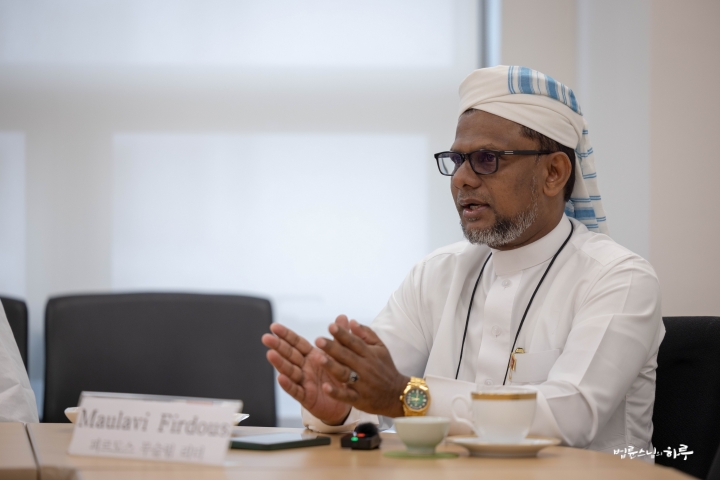
“First, let me greet you in the Islamic way. Assalamu alaikum! May God’s grace bring peace and prosperity to all.
When Venerable Pomnyun visited Sri Lanka, he participated in our organization’s dialogue meeting and had deep conversations, and I remember gaining much good information there. At that time, we talked about the power of religion and faith. Thanks to that, I’m very pleased to meet Korea’s distinguished religious leaders in person today.
People Who Called for Peace Even During 30 Years of Civil War
These four religious leaders are respected as excellent role models in Sri Lankan society. During the 30 years of civil war, we continuously voiced that ‘to win people’s hearts, it must be done through harmony, not through war.’ During that period, religious leaders carried out activities for peace and harmony, risking their lives fearlessly despite the brutality of pro-war forces. As a result, Dharmashakthi has now become one of the most powerful organizations advocating for peace in Sri Lanka.
Sri Lanka was once a very wealthy nation, but it suffered from attacks by numerous invaders. Through these long trials, solidarity and unity became important ideals among Sri Lankan people. However, many politicians later used racism and discrimination to create division among people. In this situation, Dharmashakthi has opposed the culture of discrimination and worked to move society in a better direction. As a result, divisive politics no longer works on people, and a culture of peace, harmony, and caring for each other has been established in Sri Lanka.”

Next, Catholic Father Kim Hong-jin gave a greeting. The priest was curious about what the Sri Lankan religious leaders group had been doing and also asked questions.
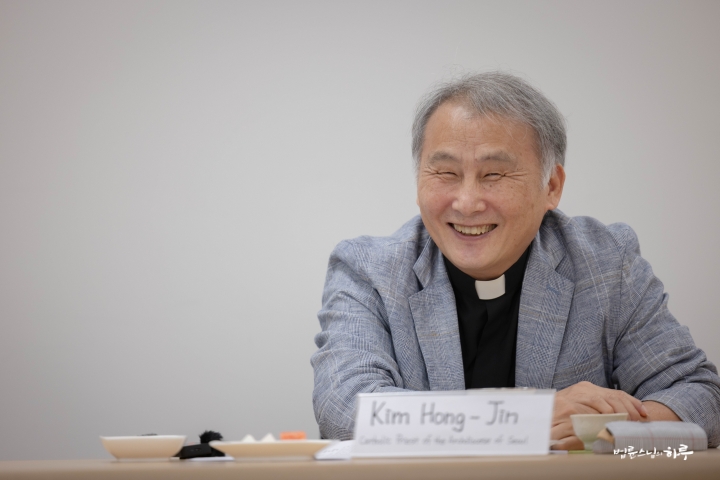
“Looking at Dharmashakthi’s activities, I felt amazement, gratitude, and joy together. At the same time, I was curious about how you could do so much work over the past 30 years and how this gathering proceeded. Today, I especially feel like Reverend Anura is a friend since he’s wearing the same clothes as me.” (Laughter)
Sunim then briefly explained the conflict situation that occurred in Sri Lanka.
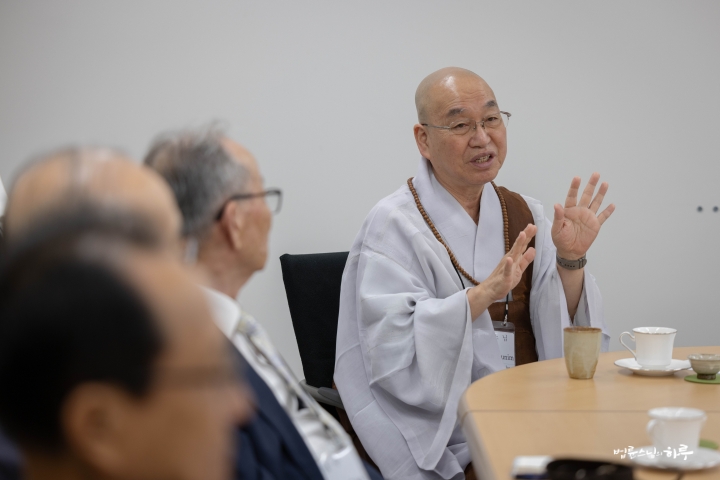
“Sri Lanka has four religions: Buddhism, Hinduism, Christianity, and Islam. Ethnically, it’s divided into Sinhalese and Tamils. So religious conflicts and ethnic conflicts are mixed together.
LTTE refers to the ‘Liberation Tigers of Tamil Eelam,’ a Tamil rebel organization. While the rebel organization controlled the northern region and government forces attacked them, terrorism continued to occur. The rebels had no choice but to commit terrorism since they were a minority. The government forces were the majority Sinhalese, and the rebels were the minority Tamils. The Sinhalese were Buddhists, and the Tamils believed in Hinduism and Islam. Christianity entered Sri Lanka later, so it spread among both Tamils and Sinhalese and took a neutral position. Additionally, ethnic conflicts arose as they were divided linguistically into Tamil and Sinhala.”
After hearing Sunim’s explanation, Pastor Park Jong-hwa said with a smile.
“Korea has one ethnicity and one language, yet conflicts are severe.” (Laughter)
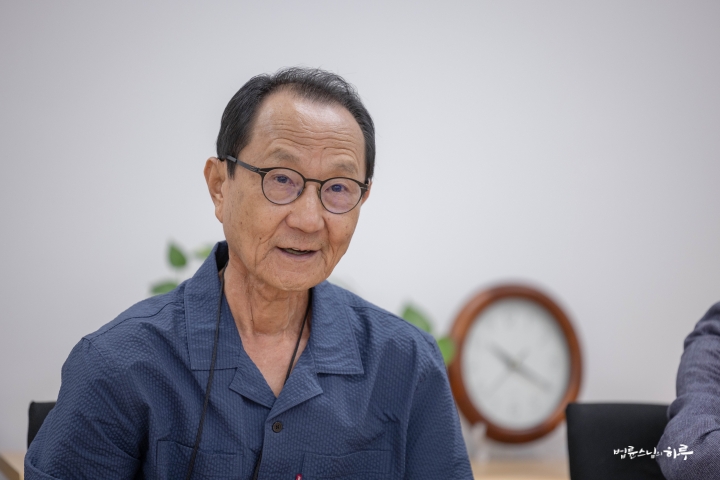
Then Reverend Anura answered Father Kim Hong-jin’s earlier question. Reverend Anura served as a religious delegate mediating between the LTTE (Liberation Tigers of Tamil Eelam, armed rebel group) and the current government to stop violence and prevent escalation to all-out war, and was one of the facilitators of religious symposiums and all other activities initiated by the Dharmashakthi gathering.
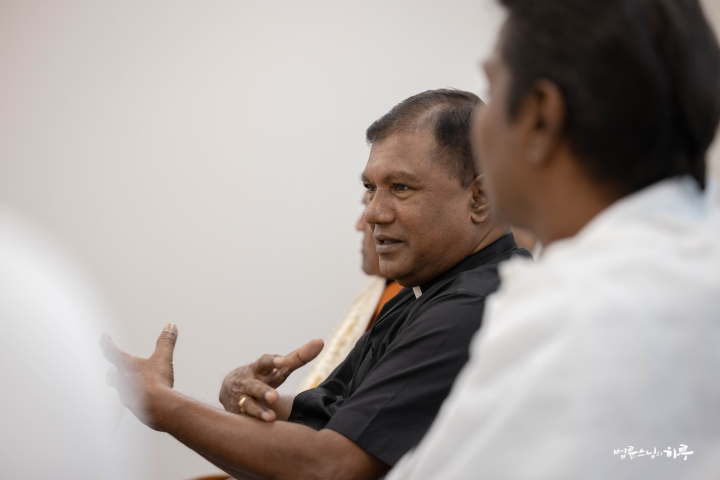
“While I can’t say our organization is perfect, thanks to those who have dedicated themselves to peace, the power of extremists in Sri Lanka has now weakened considerably. In the beginning, 13 founders started participating with the resources they had as religious people. However, when the organization was first formed, it received much criticism. Venerable Assaji especially received much criticism. This was because Buddhism, the majority religion, didn’t want to share power with other religions. Even 35 years ago, there were rampant criticisms like ‘Didn’t Venerable Assaji receive funding from churches?’, ‘I heard he received funding from overseas,’ ‘Venerable Assaji is an NGO monk.’ So initially, there were only six Buddhist monks in Dharmashakthi. There were only a few Christian and Hindu leaders, and only one or two Islamic leaders. But now we represent almost all religions and receive support from various religious leaders including cardinals and former bishops.
The Changes That Occurred When Buddhism, Christianity, Hinduism, and Islam Joined Hands
The organization Dharmashakthi wasn’t created with any intention on our part; it naturally formed as we responded to various problems in Sri Lankan society. Sri Lankan society was in a state of serious division. Tamils mainly live in northern Sri Lanka, while Sinhala-speaking Sinhalese live in most other areas. Tamils generally believe in Hinduism, and Sinhalese are Buddhists. To resolve the division between the two ethnic groups, our organization was formed with Buddhists representing Tamils and Hindus representing Sinhalese. Christianity has always played an intermediary role. We have worked to solve social problems while representing different religions and ethnicities, and the results have been very successful.
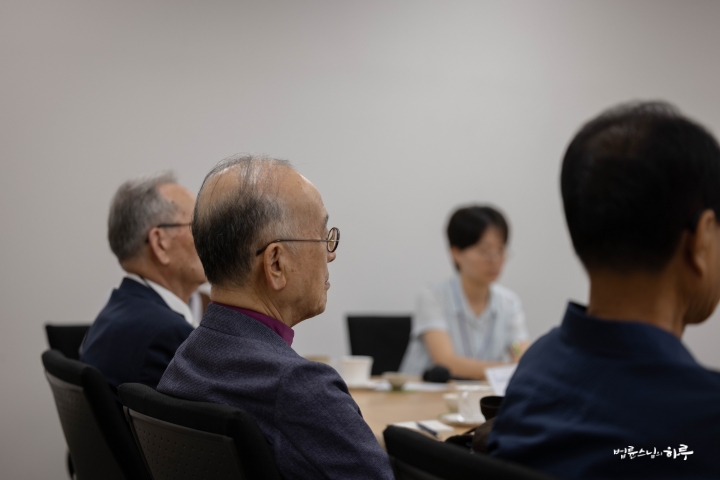
To give one example, when war broke out, the Sri Lankan government legally banned all essential goods being sent to the north. They thought that if items like coconut oil, pencils, and books were sent to Hindus, they would eventually flow to the LTTE (Liberation Tigers of Tamil Eelam, armed rebel group) and be used to continue the war. Then Christians first organized a movement to send essential goods equivalent to ten container trucks. Among Christians, there were both Tamils and Sinhalese. However, the Christians’ attempt at that time was stopped by the police. In that situation, three Buddhist monks including Venerable Assaji came forward to help with this work. In Sri Lanka, Buddhism has high authority, so when people see monks wearing robes, even the government or police cannot act carelessly. Buddhist monks accompanied the trucks to the southern border of the conflict zone to help move them, and Christian religious leaders accompanied them from the northern border to ensure the delivery of essential goods. Through this experience, we learned that ‘when religious people join forces, we can accomplish such things.'”
After listening to Pastor Anura’s explanation, Venerable Pomnyun smiled and said.

“The situation is a bit different, but it’s similar to when our religious group provides humanitarian aid to North Korea.”
Then, Venerable Asaji further explained why the Sri Lankan interfaith group had to be established.

“The most fundamental reason for Dharma Shakti’s existence is to prevent war. Sri Lanka experienced a long civil war, which led to the creation of our organization. I understand that Korea also has a division situation between North and South, though it seems to be a somewhat different issue from Sri Lanka’s. It appears to be a very high-level conflict.
Dharma Shakti, a Religious Alliance Started to Prevent War
The ordinary citizens of Sri Lanka expected religious leaders to play a significant role. Because the situation for ordinary citizens was extremely difficult, they hoped religious leaders would intervene. At that time, both the government and the LTTE rebels could ignore the opinion of a single religious leader, but when the leaders of four religions spoke together through Dharma Shakti, they could not be ignored. In this way, our organization was compelled to act due to the strong demands of Sri Lankan citizens.”
Former Superintendent Park Nam-soo actively empathized with Venerable Asaji’s explanation and spoke.

“As Venerable Asaji said, when a single religious leader steps forward, dialogue with the government doesn’t go well, but when multiple religions unite and step forward, dialogue becomes possible. Religious leaders coming together to represent the will of the people is truly the foundation of democracy. That’s why I believe that gathering the power of religions makes a great contribution to reconciliation and peace.”
Questions and answers about what they were curious about each other continued. Before having a full-scale discussion tomorrow, today they took time to fully get to know each other. Venerable Pomnyun asked the Hindu priest a question:
“To what extent does the Tamil region in northern Sri Lanka have independent autonomy?”
The Hindu priest answered.

“Although a certain degree of autonomy has been granted, the autonomy given to local governments is not actually functioning properly. Currently, the government is making promises to establish new organizations. However, the overly centralized system in Sri Lanka is becoming a problem. Since most people have to come to the capital, Colombo, even to handle small matters, there are calls for constitutional reform.”
Venerable Pomnyun smiled and empathized.
“It’s the same in Korea.”
After listening to the work done by the Sri Lankan interfaith group, Pastor Park Jong-hwa emphasized that the path to eliminating conflict and achieving peace is to recognize our differences.

“Each of our lives is simply given to us by birth, not something we chose, so we must acknowledge our differences. Wars happen because we fail to recognize these differences. I believe that acknowledging differences is ‘harmony.’ Recognizing diversity is the only way to live a harmonious life.”
As the conversation was reaching its peak, lunchtime arrived. Venerable Asaji had to hurry to conclude the conversation as he needed to eat before 12 o’clock to observe the Buddhist precept of not eating after noon.

As the conversation came to a close, Park Nam-soo, former Abbot and chair of the Peace Foundation’s religious gathering, gave closing remarks.
“Thank you for this wonderful time. Thanks to all of you, we studied very hard about Sri Lanka today.”
Pastor Anura expressed gratitude on behalf of the Sri Lankan religious gathering.
“I understand that you are all very busy people with important responsibilities in Korea. Thank you for taking the time.”
After taking a group photo together, they moved to the underground dining hall for lunch.

After the Jungto Society volunteers carefully prepared the food and served it on plates, and once everyone was seated, Venerable Asaji led the meal prayer in the Theravada Buddhist tradition

When the prayer ended, the monk smiled and said to the pastor and priest:
“Sadhu, sadhu, sadhu! In Theravada Buddhism, we don’t say ‘Amen,’ we say ‘Sadhu.’” (Laughter)

The religious leaders continued their conversation over the meal. Bishop Park Kyung-jo asked a question:
“When Korea was under Japanese colonial rule, Cheondogyo, Buddhism, and Christianity joined forces for the March 1st Independence Movement. I understand that Sri Lanka was also under British rule. Did different religions cooperate together during that time as well?”
Reverend Anura responded:

“Yes. In Sri Lanka too, religious figures cooperated during British rule. However, there wasn’t as intense a resistance movement as in India. Rather, after gaining independence from Britain, the divisions deepened further as we went through civil war.”
As our conversation continued, our interest in each other grew deeper. After finishing our meal, we moved to the lounge on the second floor and continued our conversation.
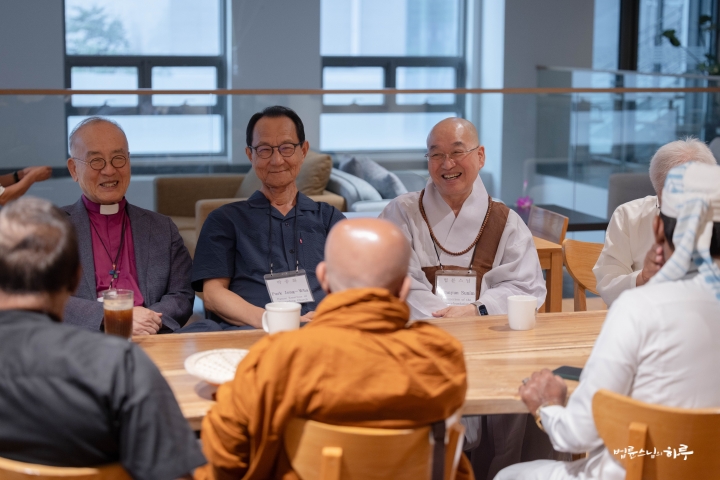
Sunim explained that there are many workers from Sri Lanka in Korea and introduced what Jungto Society is doing for them.
“In Korea, there are many workers living here from Sri Lanka and other Southeast Asian countries. At Jungto Society, we travel together with them, listen to their difficulties, and hold Dhamma talks for dialogue. In areas where many foreign workers live, we operate multicultural centers where we treat those who are sick, teach Korean language, and provide legal consultations.”
The Sri Lankan religious leaders were also curious about Cheondogyo and Won Buddhism, which they encountered for the first time today. After providing detailed explanations, they concluded the tea meeting.
After a short break, at 2 PM, everyone departed from the Jungto Social and Cultural Center together to head to Seoul National University to attend the International Reconciliation Conference. It was raining heavily outside the car windows.

Today is the opening ceremony where all participants of the International Reconciliation Conference gather together. After a 30-minute drive, they arrived at the Hoam Faculty House at Seoul National University, where the opening ceremony is being held.

Before the opening ceremony began, sunim had tea and conversation with Dr. Nam Ki-jeong, Director of the Institute for Japanese Studies at Seoul National University who hosted the International Reconciliation Conference, and Mr. Kim Won-ho, Chairman of the Ssi-al Foundation. First, Dr. Nam Ki-jeong expressed his gratitude to Sunim.

“This International Reconciliation Conference was attended by about 150 people from 23 countries. Despite your busy schedule, Venerable, we are truly grateful that you invited the Sri Lankan religious gathering and created such a meaningful occasion.”
While sharing tea, Mr. Kim Won-ho, Chairman of the Sial Foundation, asked Sunim a question:
How can countries that were once enemies achieve reconciliation?
“Is reconciliation really possible? These days, I often wonder whether reunification between South and North Korea is truly possible.”
Sunim answered.

“If we keep dwelling on past issues, it becomes difficult to solve problems. Regardless of what happened in the past, we should first decide whether it’s better to cooperate or conflict in the future. Once we establish that cooperation is the better direction for the future, then we can discuss how to resolve past issues. This makes problem-solving much easier. When we don’t think about the future and only argue about who was right or wrong in the past, we can debate all night without reaching a solution.For example, Germany and France were long-standing enemies who fought against each other in both World War I and World War II. However, looking toward the future, they decided to jointly manage their coal and steel resources. They transformed resources that had been objects of competition into a foundation for cooperation. The European Coal and Steel Community (ECSC) that emerged from this later became the starting point for the European Union (EU). When we first establish that cooperation is beneficial for the future, it becomes much easier to resolve past issues.
If South Korea and Japan only focus on the past, they are mortal enemies, but in the current era of US-China hegemonic competition, we need to first establish whether cooperation or conflict is better. The same applies to relations between South and North Korea. When we first establish that mutual cooperation is beneficial, those who suffered won’t only emphasize their victimization, and those who caused harm will be able to apologize. With this perspective, reconciliation becomes possible, but if we only argue about past rights and wrongs, reconciliation becomes impossible.”
As we conversed, it was time for the opening ceremony to begin. Everyone moved together to the Mugunghwa Hall at the Hoam Faculty House where the opening ceremony was to be held.

The International Association for Reconciliation is an academic organization established primarily by Japan and Germany to promote historical reconciliation with neighboring countries and build peace. Founded in 2020, it holds annual academic conferences that have been hosted in Japan, Rwanda, Italy, and other countries. This year, the conference will be held in Seoul, South Korea. The theme of this Seoul conference is “Bridging a Division.”

With around 150 scholars from 23 countries around the world in attendance, Professor Nam Ki-jeong, Director of the Institute for Japanese Studies at Seoul National University, delivered the welcoming remarks.

“The study of reconciliation may be researching something that doesn’t exist. Yet we must search for possibilities even in the midst of that impossibility.”
Director Nam Ki-jeong emphasized that in the context of Korea’s modern history—colonial rule, division, war, and dictatorship—reconciliation is not merely an academic subject but a ‘life task.’ He stated that while Korean society still lives with wounds, the continuous efforts and experiences of reflection for recovery are precisely the assets that the world should pay attention to. Noting that this year marks the 60th anniversary of Korea-Japan diplomatic normalization, 80 years since the division of North and South Korea, the 45th anniversary of the Gwangju Democratization Movement, and the 1st anniversary of preventing the 2023 martial law crisis, he expressed hope that this academic conference would become a turning point in concretizing the direction of Korean reconciliation studies.

Next to take the podium, Karina, President of the International Association for Reconciliation, explained reconciliation not merely as the end of conflict, but as a ‘continuous process’ of relationship restoration and community rebuilding. She warned that silence or superficial integration could actually fuel anger, and emphasized the importance of creating spaces for open and contentious dialogue.

“Reconciliation is not a destination, but a journey. We must learn how to live together beyond our differences.”
Particularly mentioning the situations in Korea and Northeast Asia, as well as conflicts in various parts of the world including Ukraine, Gaza, and Sudan, she emphasized that reconciliation is urgently needed even at this very moment, and that our strategic and courageous action is required.

Mr. Kim Won-ho, Chairman of the Ssial Foundation, who served as both sponsor and organizing committee chair of this conference, introduced ‘Ssial thought,’ which is the root of Korean people’s ideology, and emphasized the necessity of reconciliation to restore human dignity and equality. Referring to the recent candlelight resistance by Korean citizens, he described them as the ‘great Ssial’ who prevented war and preserved peace.

“Today’s small actions that bridge a world divided by discord mark the beginning of a new history.”
Chairman Kim emphasized that voices for peace and solidarity around the world must grow louder, proposing the Seoul Conference of the International Association for Reconciliation Studies as a starting point for that hope.
Finally, Professor Lee Jong-won, who has long conducted reconciliation studies research at Waseda University and Rikkyo University in Japan, took the podium to deliver the keynote presentation.

Reconciliation is the art of justice and peace coexisting in tension.”
Professor Lee Jong-won, who has experienced both Korea and Japan, has provided deep insights into the concept and practice of international reconciliation, focusing on Korea-Japan relations. He introduced four approaches to the concept of reconciliation (moral, institutional, contentious, and interdependent), diagnosing that ‘contentious reconciliation’ has been the primary mode between Korea and Japan. He also examined the differences in perception between the two countries regarding the illegality of colonial rule, the historical context of the 1965 normalization of diplomatic relations, and subsequent joint declarations and apology statements, arguing that future-oriented reconciliation without resolving historical issues is hollow.

Following that, the Tree of Peace Choir celebrated the opening ceremony by singing three songs that matched the theme of this conference.

First, they performed an arrangement of the traditional folk song “Gasiri,” reinterpreted as a song symbolizing the pain of women who were taken as comfort women during the Japanese colonial period. This was followed by “In Front of the Wire Fence,” a song reflecting the reality of the Korean Peninsula’s division. Finally, they sang the choir’s original composition, “For the Forest of Peace.”
As the beautiful voices and melodies resonated widely, the venue was soon filled with a profound echo of hearts united in their wish for reconciliation and peace.

Through the two-hour opening ceremony, we were able to share together that reconciliation is not an event that magically ‘ends,’ but rather a journey we walk together while embracing each other’s wounds and differences. At this very moment, someone is suffering from conflict, while someone else is courageously building bridges. The opening ceremony concluded with all participants pledging to become architects of those bridges.

All participants gathered in front of the stage for a group photo.

After the commemorative photo session ended, the attendees exchanged greetings with bright smiles and continued brief conversations, sharing the lingering atmosphere of the opening ceremony together.

After the dinner gathering, the Sri Lankan religious leaders returned by car to the Jungto Social and Cultural Center, concluding today’s schedule. The pastors, priests, bishops, and other religious leaders promised to meet again tomorrow at the International Reconciliation Conference venue before heading home.


As the sun set, Sunim had a meeting with JTS President Park Ji-na starting at 7 PM. Over the past 11 days, JTS had dispatched volunteers to Myanmar, which suffered severe earthquake damage, to conduct emergency relief activities. In the previous relief effort, they distributed food and relief supplies in the Mandalay region. This time, they provided food and bags to 3,661 households living in 11 refugee camps in the Amarapura region. President Park Ji-na gave a detailed report on the emergency relief activities, and Sunim discussed future support directions before concluding the meeting.
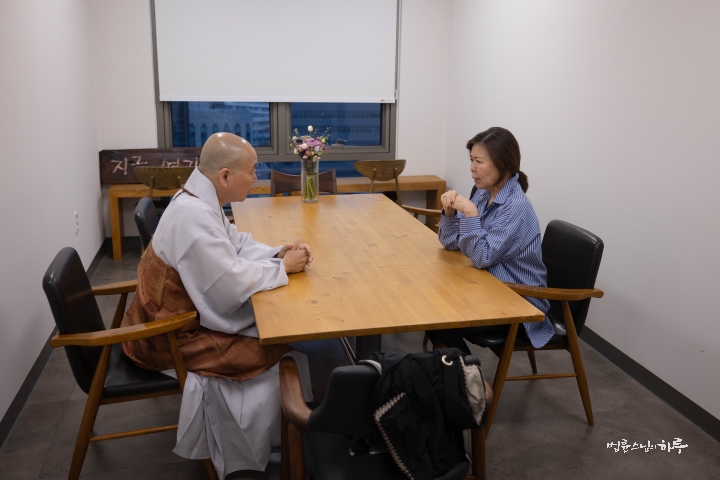
Tomorrow morning, Sunim will attend the second day of the International Reconciliation Conference at Seoul National University with the Sri Lankan religious group, participating in a conference on the theme of “Inter-religious Dialogue in Asia for Reconciliation and Peace.” In the afternoon, there will be a more in-depth discussion on “Reconciliation and Peace” at the Jungto Social and Cultural Center, with the participation of social elders and neighboring religious leaders.



